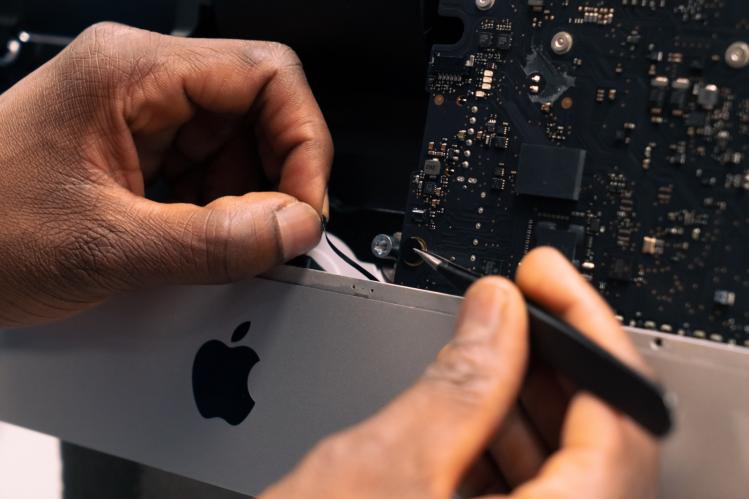
Electronic waste is the fastest-growing refuse stream in the United States. It’s expected that by 2030, the world will be generating 74 million tons of e-waste a year, including billions of discarded smartphones. Almost every home has a desk drawer or box in the closet filled with outdated chargers, cameras, and phones that ideally would be recycled but more likely will find their way to a landfill—there to leak toxic materials into the soil and aquifers.
New York’s Digital Fair Repair Act, signed into law by Gov. Kathy Hochul in December 2022, won’t eliminate e-waste. It won’t counter the cultural obsession with new technological toys (American families spend nearly $1,500 per year on electronics). It isn’t universal, since it excepts large appliances like refrigerators, medical devices, and agricultural equipment. But it is a step in the right direction, an acknowledgment of how financially and environmentally unsustainable it is to constantly replace electronics. And it is the biggest step any state has taken thus far, though several other states are considering similar legislation.
What the law will do is guarantee that consumers and independent repair shops have the same access to diagnostics, parts, and repair instructions that manufacturers provide to their own technicians. Taking effect on July 1, the law addresses some of the concerns long raised by the right-to-repair movement: that repair restrictions set by manufacturers prevent timely fixes (primarily by limiting access to providers), increase consumer prices for repairs, harm the environment, and threaten small businesses. In their defense, manufacturers often cite concerns over unsafe third-party repairs and the right to protect proprietary information, but a 2021 FTC report found that “there is scant evidence to support manufacturers’ justifications for repair restrictions.” Often, these restrictions are simply anticompetitive, which helps explain why the Biden administration is also pushing to increase enforcement or even draft new rules against them. This pressure has already prompted some major companies to take action ahead of new laws. Apple, for example, launched a self-service repair store in 2022 to sell individual parts and repair manuals, though the company is still criticized for its notoriously difficult-to-fix products.
In many cases, it’s hard to know just how repairable a product might be until it’s bought and paid for. No label on the packaging distinguishes the earbuds with batteries that can be replaced in under an hour for fifteen dollars from those that can’t be replaced at all. The U.S. Public Interest Research Group, a consumer advocacy organization, claims that laws like the one in New York could save American families an average of $330 per year as they repair rather than replace their electronics, but consumers could potentially save even more if they could get a sense of a product’s repairability when deciding what to buy. To that end, as the right-to-repair movement gains momentum, lawmakers in the United States might consider advocating for “repairability scores” to appear on electronics labels. (France implemented such a measure last year.)
There may be little hope of leveling the mountains of electronic waste; right-to-repair laws, no matter how broad, will not keep manufacturers from designing products that break down in a short period of time. But they’ll give consumers a chance to opt out of the relentless cycle of product upgrades, and could also yield some much-needed protection for the environment. It can seem like an old-fashioned value to extend the life of a product when there’s always something newer and flashier on the market—but, given the realities of finite resources and ever-higher prices, it might be just what modern consumers need.
Please email comments to [email protected] and join the conversation on our Facebook page.
Previous Story
Letters | Talking about abuse and abusers; Dorothy Day chooses her own way
Next Story
Another Nigerian Martyr

